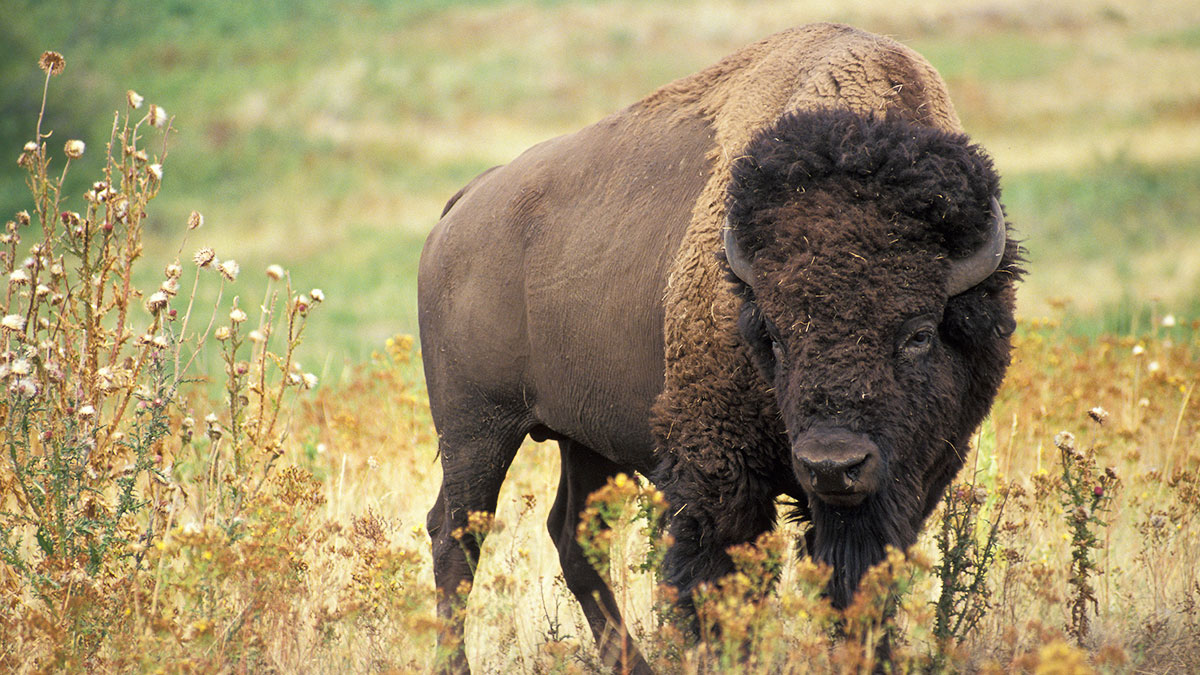Reckless motorists put local bison at risk, Parks Canada shrugs
For a struggling bison population, a small handful of accidents could have big consequences.
 Supplied
SuppliedFor a struggling bison population, a small handful of accidents could have big consequences.
This August, a motor collision at Elk Island National Park killed a resident plains bison. This was the sixth bison killed by a vehicle in just three years. In an interview with the CBC, the park’s superintendent Dale Kirkland explained that motorists who ignore speed limits are putting local wildlife at risk.
This is hardly the first time that human behaviour has put bison populations at risk. Given this recent news, are we really showing enough respect for them?
Judging by the lukewarm reprimand to the issue of Elk Island’s motorised killings, the answer is a resounding “no.” According to a news release from Parks Canada, reckless motorists have been observed exceeding the park’s 40 kilometre/hour speed limits by as much as 100 km/hr.
And how did Parks Canada respond? A few new speed bumps, signs, and a warning asking drivers to slow down — more of a request than a demand. If someone’s risk tolerance is enough to go 100 km/hr over the limit, are gentle reprimands really going to stop them?
When it comes to describing ecosystem-related issues, we tend to focus on the numbers before anything else.
According to a report by Parks Canada, the latest surveyed bison population of Elk Island measured up to a modest 399 in the south in 2017 and 536 in the north in 2018. In total, that’s 935 bison. Just 935 bison may not sound like a very big herd, especially when the species’ estimated population across North America fluctuates within the ballpark of 400,000.
However, even in small herds like that at Elk Island Park, these deaths can have massive impacts. Low genetic diversity is already a huge problem for bison conservation, so even just a handful of deaths could lead to nasty consequences down the line.
The impacts of this run deeper than we think — although deaths have an effect on the overall population, they also have an impact on the animals themselves. It’s important to remember that these are social animals. Recent research shows that sociality in cattle populations is a key attribute to their survival and wellbeing. Though we may seem far removed from these large creatures, cows and bison aren’t as different from us as we might think.
Loss is a major part of our lives. It’s something that we all have to come to terms with sooner or later. When I think of “loss,” I see the death of family, or recall the pain of past love. But is that grief a uniquely human trait?
Cattle are known to form close friendships and to hold on to those bonds, even during periods of prolonged separation. For wild herd animals like bison, numbers are everything. And in the absence of caring friends, predators become much more threatening.
Per the Criminal Code of Canada, the punishment for hitting someone with a vehicle can be as severe as five years in prison — or, even a life sentence, if the victim dies in the collision. As of 2022, Edmonton’s human population was roughly 1.1 million — or about 1176 people per bison at Elk Island. Proportional to Elk Island’s population, killing six bison is equivalent to removing nearly 7000 Edmontonians from the gene pool. I’m not saying that hitting a bison with your truck should earn you 1176 life sentences — but tougher penalties are clearly necessary.
We must defend our ecosystems from external threats, human or not, and harsh offences sometimes necessitate harsh punishments. If we valued our wildlife as highly as we value ourselves, our bison would be much safer. If Parks Canada really wants to defend our bison, they should trade in their wrist slaps for a punishment with a bit more bite.




